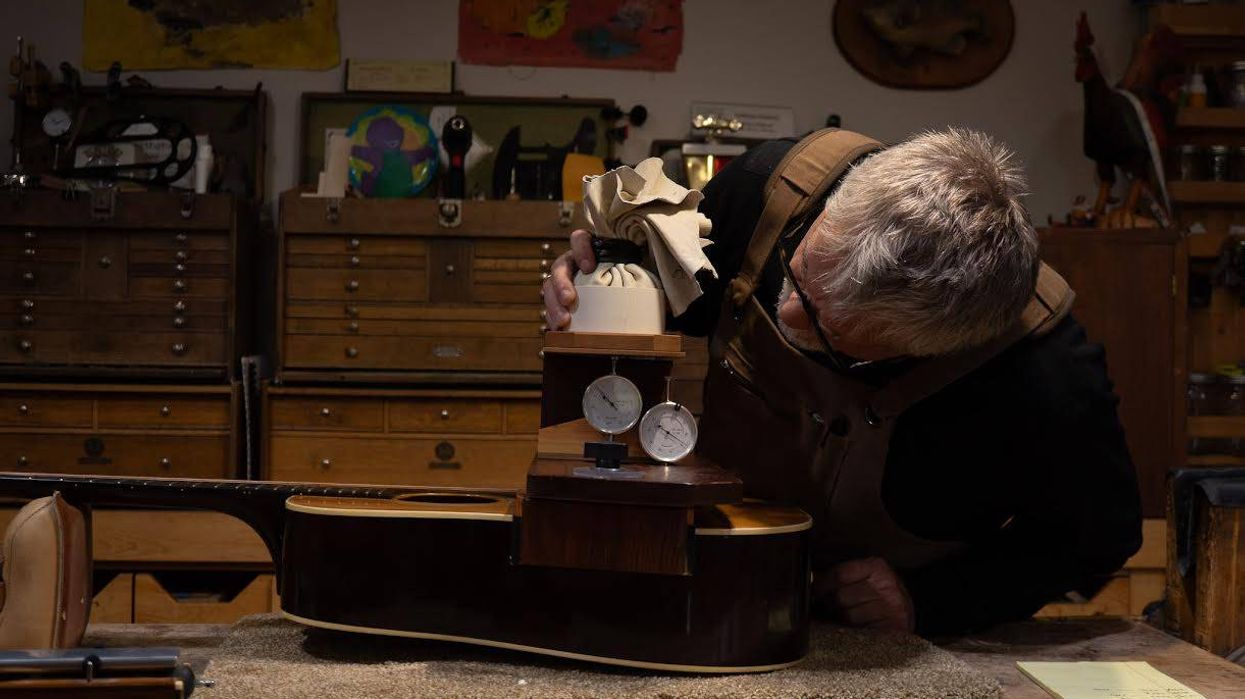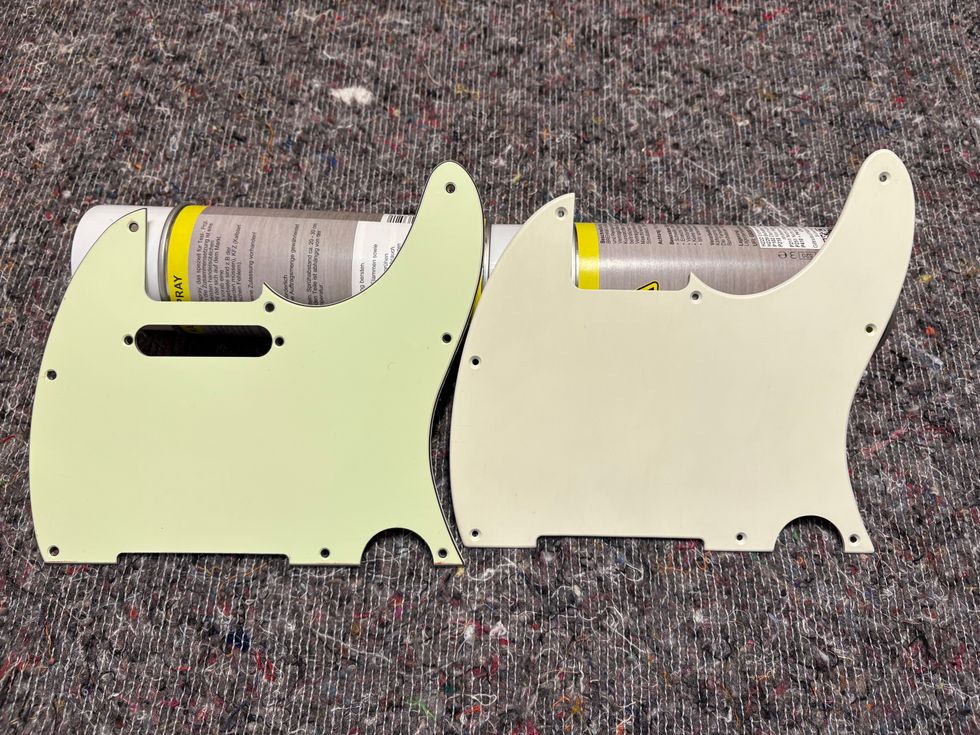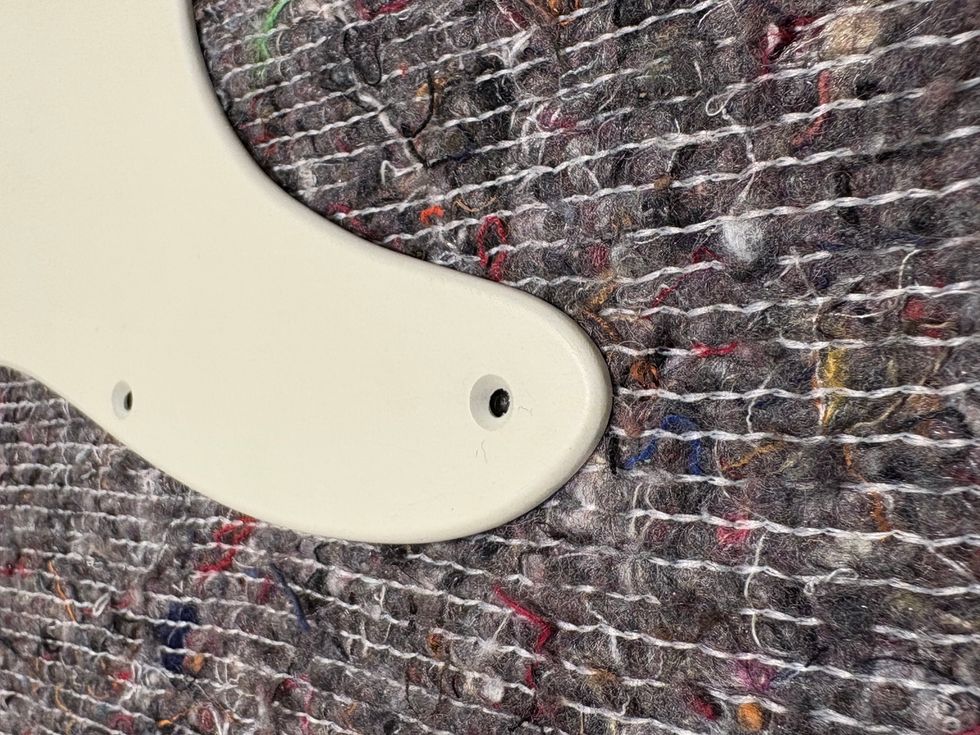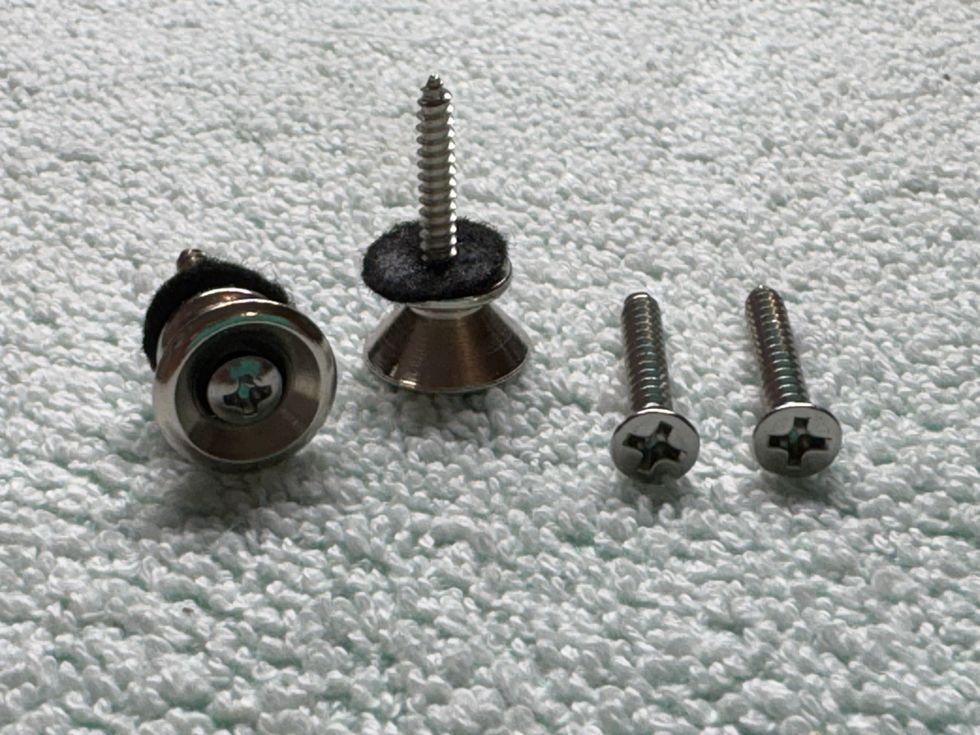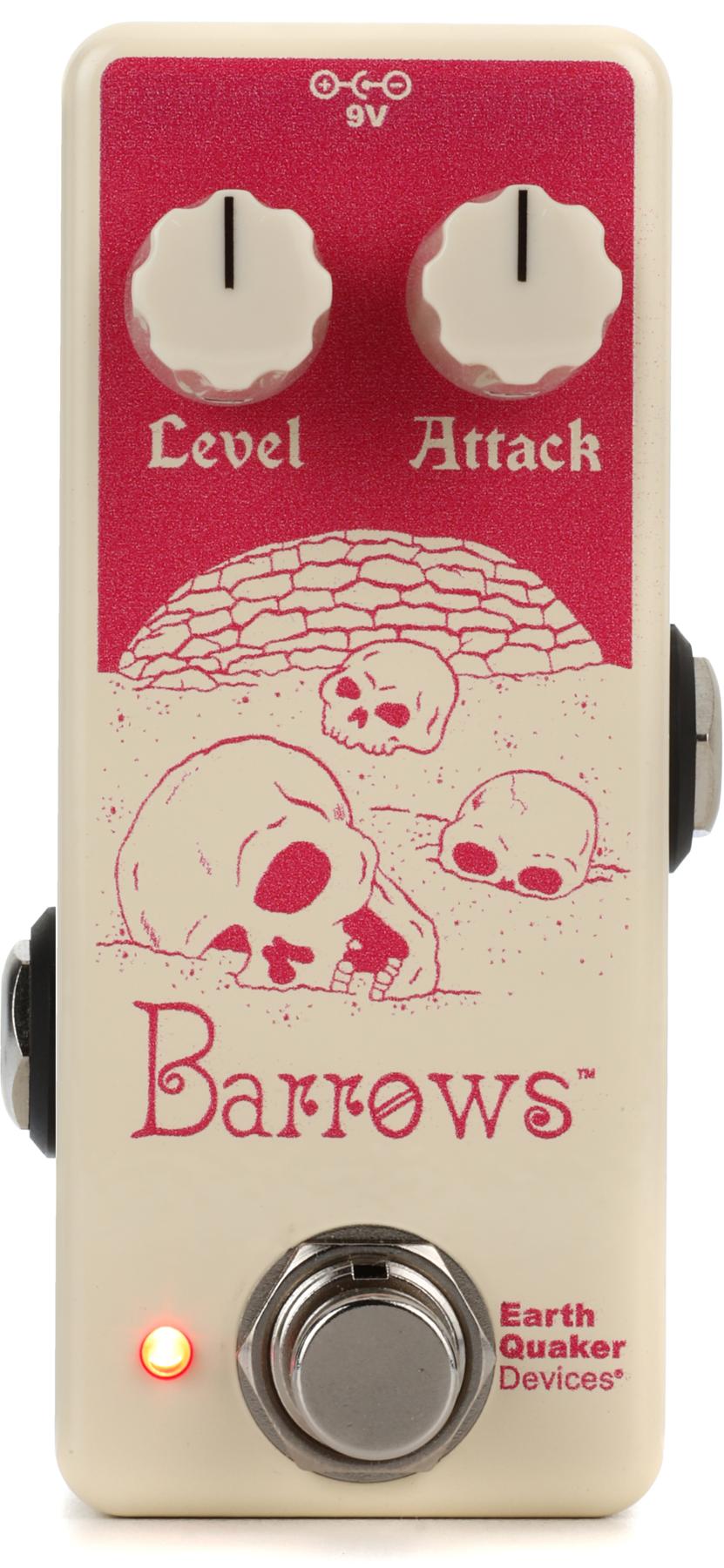This month I’d like to share with you a clever new tool that musicians, guitar techs and career guitar repair people should be hip to, when it comes to restoring a potentiometer’s performance. It’s called the Pot Cleaning Cap and it gets the job done in less than 3/4 of the time that it would normally take to properly clean those noisy, broken down pots.
Perhaps you own or have a few guitars in your repair shop that are Gibson electric archtops or thinline semi-hollowbodies. It doesn’t matter if they’re highly collectable or the latest 2008 model, if you’re dealing with scratchy, intermittent noise, you no longer have to remove the volume pots, tone pots and Varitone switches through the “F” hole or pickup pocket route just to clean.
The Pot Cleaning Cap works with many brands and models of guitars. You can use it on a ‘65 Fender Strat that has noisy, annoying pots without going through all the extra time removing the strings, screws and fragile pickguard, perhaps disturbing and possibly damaging the electronics. When I get a ‘59 Les Paul ‘Burst in the shop, this is a clean way to inject cleaner without having it splash throughout the control cavity onto those well-kept “Black Beauty” Sprague caps. 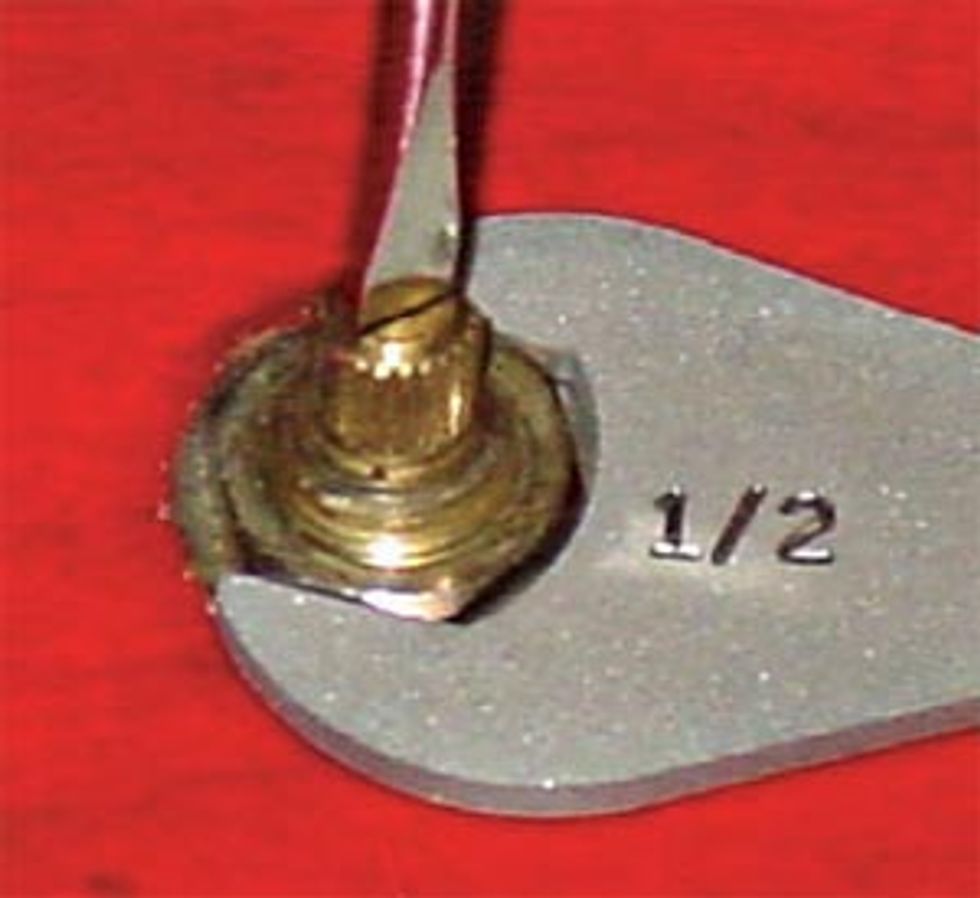
The Pot Cleaning Cap is designed to work with 3/8 x 32-thread CTS-brand control pots and switches. With its special threaded chamfered edge you can attach the cap to the shortest of the available pot threads with a quarter turn. Simply remove the control knob and screw on the stainless steel Pot Cleaning Cap. An access hole guides your spray cleaner extension tube directly to the pot shaft. The cleaner flows down the shaft to where it’s needed at the contacts. A hole in the top of the cap lets you turn a split pot shaft with a screwdriver for thorough coverage as you spray.
For this month’s restoration, I used the following tools, available at stewmac.com:
- Pot Cleaning Cap (#0291)
- 1/2” and 14mm Slim Wrench (#3703)
- DeoxIt (#5027)
- Knob & Bushing Puller (#3515)
- Guitar Tech Screwdriver Set (#3393)
Pot Restoration
Aerosol contact cleaners can spray cold and potentially crack a guitar’s finish, so the first step is to protect the working area with a soft, protective cloth. In all my years, I have not had that happen with any type of pot cleaners, but perhaps it has happened to you or someone you know. My cloth of choice throughout the years has been a piece of leather skirting. If I wish to set some of my tools on the leather, it will support the weight and cushion the top from possible damage. I then use my Knob & Bushing Puller to remove the knobs if they are not easily removed by hand with light to medium pressure.
Before attaching the Pot Cleaning Cap, I like to secure and tighten down the nut to the guitar top. For this I use a flathead screwdriver placed in the split pot shaft, turning counter-clockwise until it bottoms out. While keeping the screwdriver in position, I then use my Slim Wrench on the 1/2” side, turning clockwise and tightening the nut. This will keep the pot from rotating and stressing or breaking wires. It’s now time to attach the Pot Cleaning Cap with a quarter to full turn. 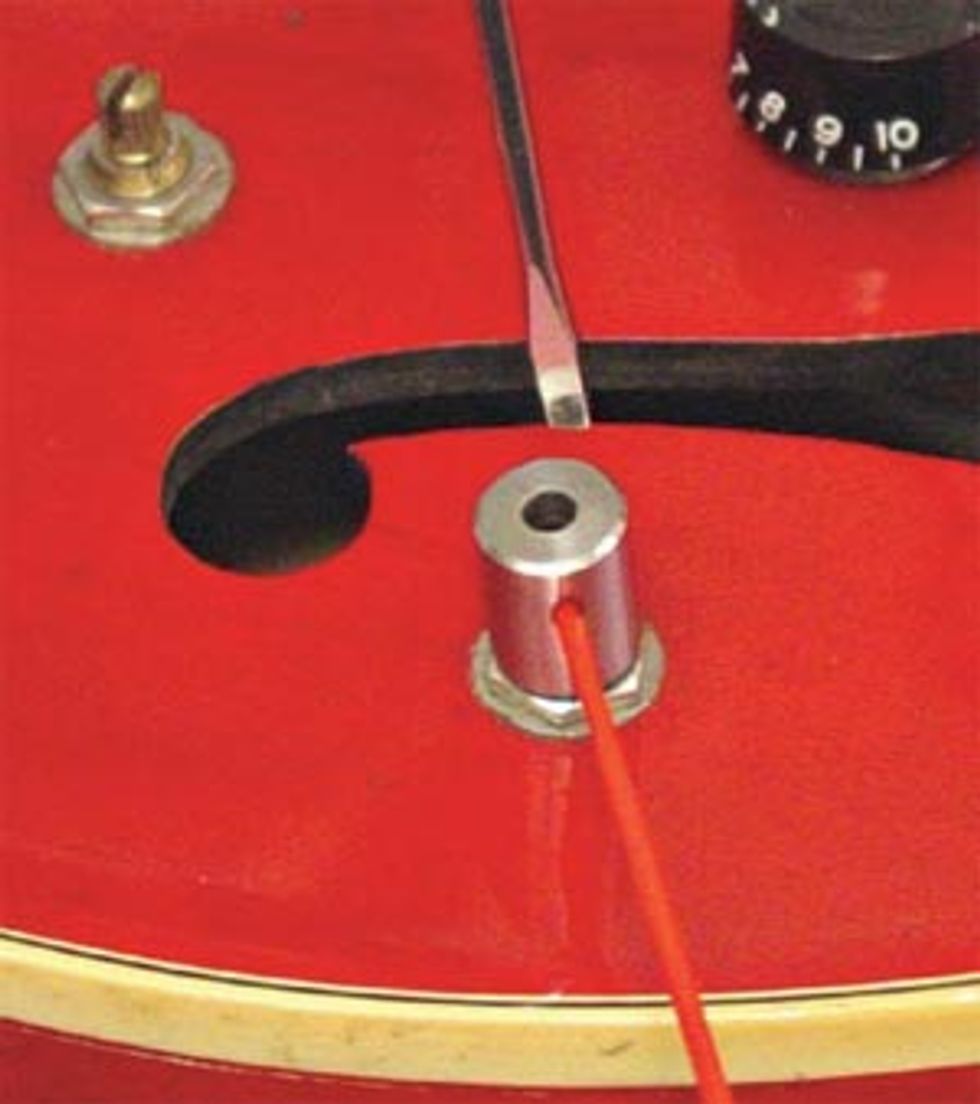
Then, through the top hole of the Pot Cleaner Cap I turn the split pot shaft clockwise and counter-clockwise using my flathead screwdriver, assisting the flow of the cleaner onto the contacts. Due to the Pot Cleaning Cap’s sealed design, there should be very little to no DeoxIt flow out when removing the cap. Finally, test the pots through your amp before attaching the knobs to make sure that a second session is not needed.
Now you can avoid high labor charges in a shop just to have your pots cleaned; likewise, for repair professionals, this tool will improve your efficiency and open up time to work on the months of catch-up work you may have in your shop.
As always, thank you for checking out “Restoring an Original.”
- John
John Brown
John Brown, of Brown''s Guitar Factory, is the inventor of the Fretted/Less bass. He owns and operates a full guitar manufacturing and repair/restoration facility, which is staffed by a team of talented luthiers. He is also the designer of guitar making/repair tools and accessories that are used today by instrument builders throughout the world.
www.brownsguitarfactory.com
info@brownsguitarfactory.com



